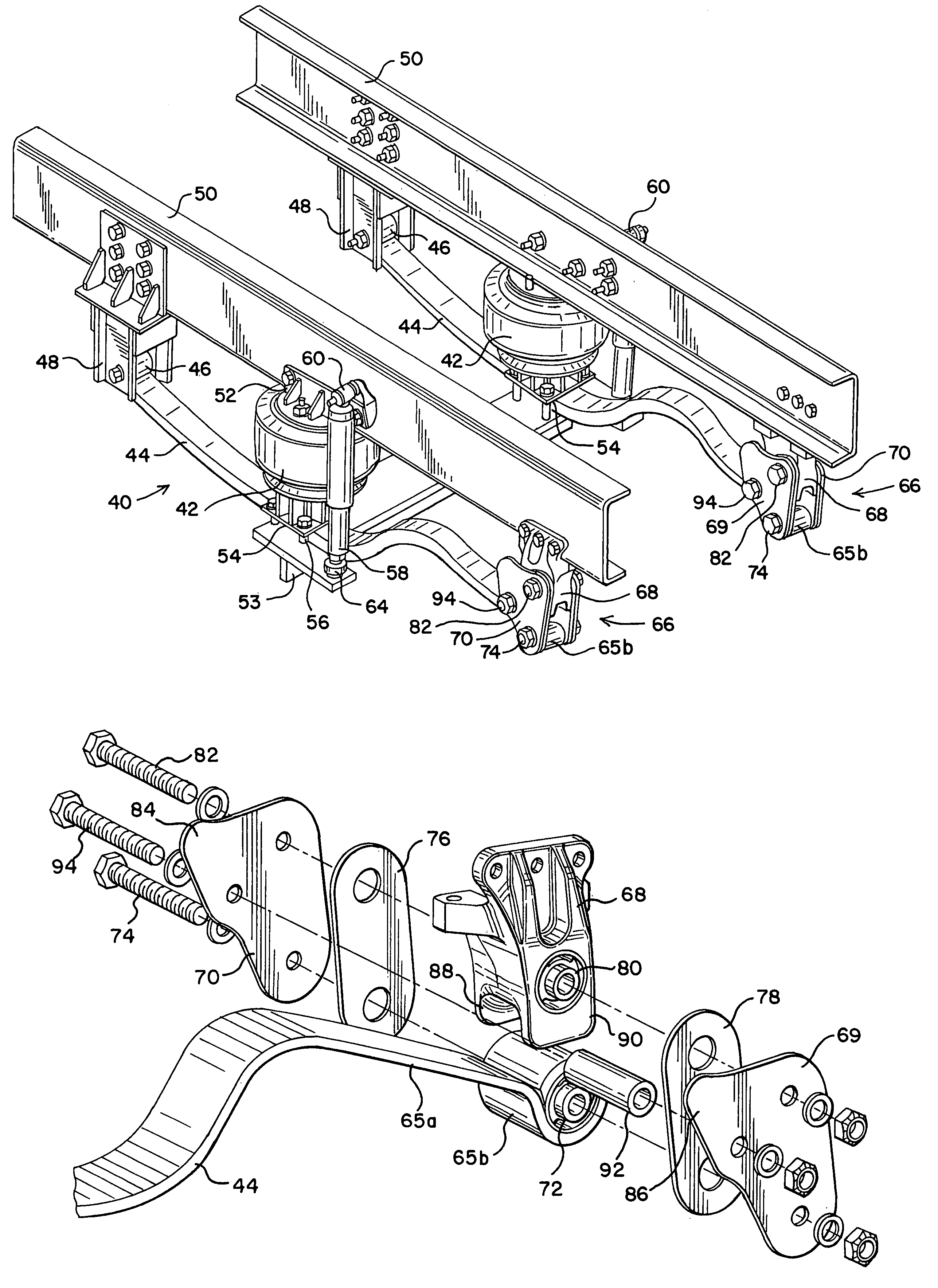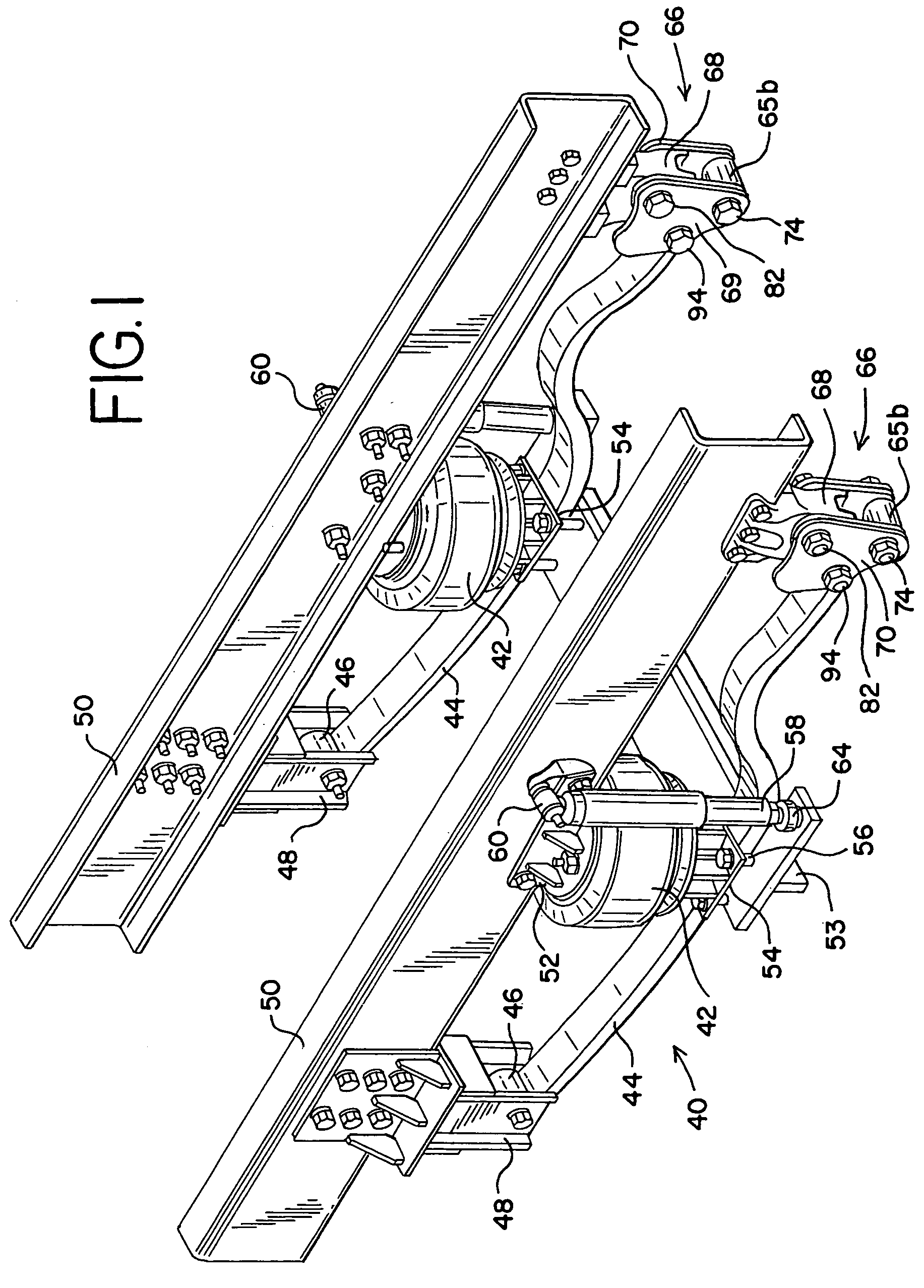Shackle assembly
a technology of shackle and shackle plate, which is applied in the direction of spring/damper, mechanical apparatus, transportation and packaging, etc., can solve the problems of inability to provide sufficient lateral and conical stiffness of the suspension, inability to provide vertical compliance of the conventional assembly, and inability to use rigid, rigid, heavy bushings and shackle plates. to achieve the effect of enhancing vertical, torsional and conical performance, and enhancing suspension travel
- Summary
- Abstract
- Description
- Claims
- Application Information
AI Technical Summary
Benefits of technology
Problems solved by technology
Method used
Image
Examples
Embodiment Construction
[0023]FIGS. 1–2 illustrate a steering axle / front suspension system generally designated by reference number 40. It will be seen and understood that the construction of this suspension system on one side is duplicated on the opposite side of the vehicle. It will further be understood that, although the shackle assembly forming the subject matter of the present invention is shown as being positioned at the rear end of a leaf spring included with the suspension system, it could have equal utility at the opposite end of the leaf spring.
[0024]Furthermore, while the illustrated embodiment is directed to a combination air-mechanical suspension, it will be understood by those skilled in the art that the present invention has utility in strictly mechanical suspensions as well. Still further, the present invention is not limited to single-leaf leaf spring suspensions, and is not limited to front suspensions, as illustrated.
[0025]The active or functional components of the front suspension syst...
PUM
| Property | Measurement | Unit |
|---|---|---|
| force | aaaaa | aaaaa |
| stiffness | aaaaa | aaaaa |
| contact surface | aaaaa | aaaaa |
Abstract
Description
Claims
Application Information
 Login to View More
Login to View More - R&D
- Intellectual Property
- Life Sciences
- Materials
- Tech Scout
- Unparalleled Data Quality
- Higher Quality Content
- 60% Fewer Hallucinations
Browse by: Latest US Patents, China's latest patents, Technical Efficacy Thesaurus, Application Domain, Technology Topic, Popular Technical Reports.
© 2025 PatSnap. All rights reserved.Legal|Privacy policy|Modern Slavery Act Transparency Statement|Sitemap|About US| Contact US: help@patsnap.com



